
|
|
| Brand Name: | Kingrail |
| Model Number: | precision casting |
| MOQ: | Negotiable |
| Price: | Negotiable |
| Packaging Details: | standard export package, or as per customer request |
| Payment Terms: | L/C, D/A, D/P, T/T, Western Union, MoneyGram |
Production of High-Quality Customized OEM and ODM Manufacturer Aluminum Die-Casting Machined Parts
Castings are metal forming objects obtained by various casting methods, that is, the smelted liquid metal is injected into the pre-prepared casting mold by pouring, injection, suction or other casting methods, and after cooling, after grinding and other subsequent processing methods. , the resulting object of certain shape, size and properties.
High-Quality Customized OEM and ODM Manufacturer Aluminum Die-Casting Machined Parts
There are many classification methods for castings: according to the different metal materials used, they are divided into steel castings, iron castings, copper castings, aluminum castings, magnesium castings, zinc castings, titanium castings, etc. And each type of casting can be further divided into different types according to its chemical composition or metallographic structure. For example, iron castings can be divided into gray iron castings, ductile iron castings, vermicular iron castings, malleable iron castings, alloy iron castings, etc.; according to the different casting methods, castings can be divided into ordinary sand castings, metal castings, die castings , centrifugal castings, continuous castings, investment castings, ceramic castings, electroslag remelting castings, bimetal castings, etc. Among them, ordinary sand castings are the most widely used, accounting for about 80% of all castings. And aluminum, magnesium, zinc and other non-ferrous metal castings are mostly die castings.
Detection of Internal Defects in Castings High-Quality Customized OEM and ODM Manufacturer Aluminum Die-Casting Machined Parts
For internal defects, the commonly used nondestructive testing methods are radiographic testing and ultrasonic testing. Among them, the radiographic inspection effect is the best, it can obtain an intuitive image reflecting the type, shape, size and distribution of internal defects, but for large-thickness large castings, ultrasonic inspection is very effective, and the position of internal defects can be measured more accurately. , equivalent size and distribution.
1) Radiographic inspection (Micro focus XRAY)
X-rays or γ-rays are generally used as radiation sources for ray inspection, so equipment and other auxiliary facilities for generating ray are required. When the workpiece is placed in the ray field, the radiation intensity of the ray will be affected by the internal defects of the casting. The radiation intensity emitted through the casting varies locally with the size and nature of the defect, forming a radiographic image of the defect, which is imaged and recorded through a radiographic film, or detected and observed in real time through a fluorescent screen, or detected by a radiation counter. Among them, the method of imaging and recording by radiographic film is the most commonly used method, which is commonly referred to as radiographic inspection. The defect image reflected by radiography is intuitive, and the shape, size, number, plane position and distribution range of defects are all It can be shown, but the depth of the defect cannot be reflected in general, and special measures and calculations are needed to determine it. The international foundry industry network has applied the method of ray computed tomography, which cannot be popularized due to the expensive equipment and high use cost, but this new technology represents the future development direction of high-definition ray detection technology. In addition, the use of a microfocus X-ray system that approximates a point source actually eliminates the blurry edges created by larger focus devices, resulting in sharper image outlines. Using a digital imaging system can improve the signal-to-noise ratio of the image and further improve the clarity of the image.
2) Ultrasonic testing
Ultrasonic testing can also be used to inspect internal defects. It uses the propagation of sound beams with high-frequency sound energy inside the casting to generate reflections when they hit the internal surface or defects to find defects. The magnitude of the reflected acoustic energy is a function of the directivity and nature of the interior surface or defect and the acoustic impedance of such a reflector, so the acoustic energy reflected from various defects or interior surfaces can be applied to detect the presence of defects, wall thickness or surface the depth of the defect. As a widely used non-destructive testing method, ultrasonic testing has the main advantages of: high detection sensitivity, which can detect small cracks; large penetration ability, which can detect thick section castings. Its main limitations are: difficult to interpret reflection waveforms for discontinuous defects with complex contour dimensions and poor directivity; for undesired internal structures such as grain size, microstructure, porosity, inclusion content or fine dispersion Precipitates, etc., also hinder waveform interpretation; in addition, it is necessary to refer to standard test blocks during detection.
Main Testing and Inspection Device of High-Quality Customized OEM and ODM Manufacturer Aluminum Die-Casting Machined Parts
| No. | Device | Type | Qty | Status | Note |
| 1 | End quenching machine | DZJ-I | 1 | working | Testing |
| 2 | Electric resistance furnace | SX2-8-12 | 2 | working | Testing |
| 3 | Inverted metallurgic microscope | 4XCE | 1 | working | Inspection |
| 4 | High temperature box resistance furnace | SX2-4-13 | 1 | working | Testing |
| 5 | Automatic digital display Rockwell hard-tester | 200HRS-180 | 1 | working | Inspection |
| 6 | Electronic Brinell hardness tester | THB-3000 | 1 | working | Inspection |
| 7 | HR-150B Rockwell hardness tester | HR-150B | 1 | working | Inspection |
| 8 | Rapid multi-element analyzer | JS-DN328 | 1 | working | Inspection |
| 9 | Electric arc furnace | JSDL-8 | 1 | working | Testing |
| 10 | Rapid multi-element analyzer(C & S) | JS-DN328 | 1 | working | Inspection |
| 11 | Infrared thermometer | AR872 | 2 | working | Inspection |
| 12 | Portable chemical composition analyzer | AR872 | 2 | working | Inspection |
| 13 | Test specimen sampler | KW30-6 | 1 | working | Inspection |
![]()


|
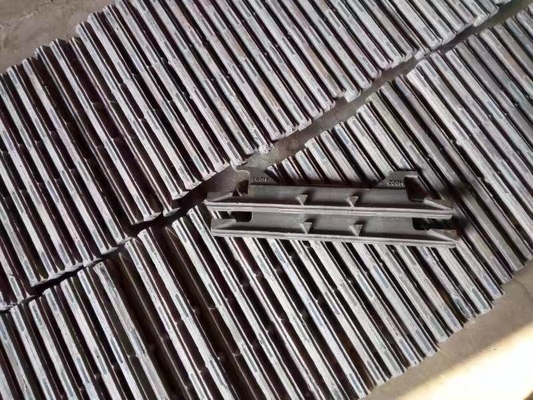

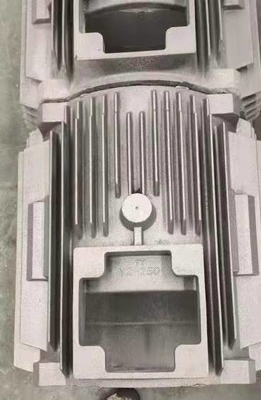
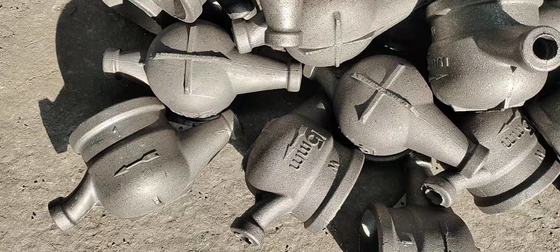
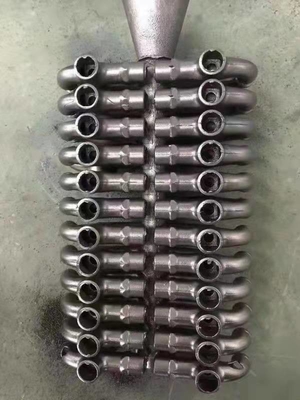
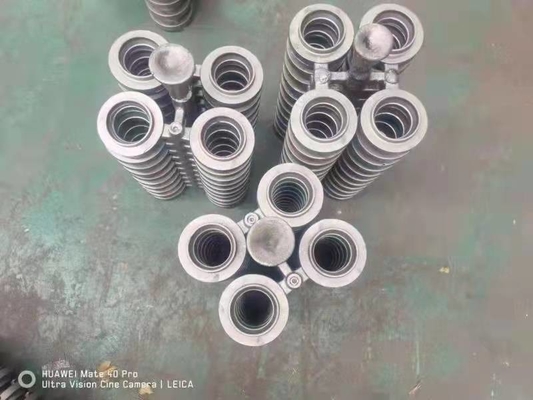
| Brand Name: | Kingrail |
| Model Number: | precision casting |
| MOQ: | Negotiable |
| Price: | Negotiable |
| Packaging Details: | standard export package, or as per customer request |
| Payment Terms: | L/C, D/A, D/P, T/T, Western Union, MoneyGram |
Production of High-Quality Customized OEM and ODM Manufacturer Aluminum Die-Casting Machined Parts
Castings are metal forming objects obtained by various casting methods, that is, the smelted liquid metal is injected into the pre-prepared casting mold by pouring, injection, suction or other casting methods, and after cooling, after grinding and other subsequent processing methods. , the resulting object of certain shape, size and properties.
High-Quality Customized OEM and ODM Manufacturer Aluminum Die-Casting Machined Parts
There are many classification methods for castings: according to the different metal materials used, they are divided into steel castings, iron castings, copper castings, aluminum castings, magnesium castings, zinc castings, titanium castings, etc. And each type of casting can be further divided into different types according to its chemical composition or metallographic structure. For example, iron castings can be divided into gray iron castings, ductile iron castings, vermicular iron castings, malleable iron castings, alloy iron castings, etc.; according to the different casting methods, castings can be divided into ordinary sand castings, metal castings, die castings , centrifugal castings, continuous castings, investment castings, ceramic castings, electroslag remelting castings, bimetal castings, etc. Among them, ordinary sand castings are the most widely used, accounting for about 80% of all castings. And aluminum, magnesium, zinc and other non-ferrous metal castings are mostly die castings.
Detection of Internal Defects in Castings High-Quality Customized OEM and ODM Manufacturer Aluminum Die-Casting Machined Parts
For internal defects, the commonly used nondestructive testing methods are radiographic testing and ultrasonic testing. Among them, the radiographic inspection effect is the best, it can obtain an intuitive image reflecting the type, shape, size and distribution of internal defects, but for large-thickness large castings, ultrasonic inspection is very effective, and the position of internal defects can be measured more accurately. , equivalent size and distribution.
1) Radiographic inspection (Micro focus XRAY)
X-rays or γ-rays are generally used as radiation sources for ray inspection, so equipment and other auxiliary facilities for generating ray are required. When the workpiece is placed in the ray field, the radiation intensity of the ray will be affected by the internal defects of the casting. The radiation intensity emitted through the casting varies locally with the size and nature of the defect, forming a radiographic image of the defect, which is imaged and recorded through a radiographic film, or detected and observed in real time through a fluorescent screen, or detected by a radiation counter. Among them, the method of imaging and recording by radiographic film is the most commonly used method, which is commonly referred to as radiographic inspection. The defect image reflected by radiography is intuitive, and the shape, size, number, plane position and distribution range of defects are all It can be shown, but the depth of the defect cannot be reflected in general, and special measures and calculations are needed to determine it. The international foundry industry network has applied the method of ray computed tomography, which cannot be popularized due to the expensive equipment and high use cost, but this new technology represents the future development direction of high-definition ray detection technology. In addition, the use of a microfocus X-ray system that approximates a point source actually eliminates the blurry edges created by larger focus devices, resulting in sharper image outlines. Using a digital imaging system can improve the signal-to-noise ratio of the image and further improve the clarity of the image.
2) Ultrasonic testing
Ultrasonic testing can also be used to inspect internal defects. It uses the propagation of sound beams with high-frequency sound energy inside the casting to generate reflections when they hit the internal surface or defects to find defects. The magnitude of the reflected acoustic energy is a function of the directivity and nature of the interior surface or defect and the acoustic impedance of such a reflector, so the acoustic energy reflected from various defects or interior surfaces can be applied to detect the presence of defects, wall thickness or surface the depth of the defect. As a widely used non-destructive testing method, ultrasonic testing has the main advantages of: high detection sensitivity, which can detect small cracks; large penetration ability, which can detect thick section castings. Its main limitations are: difficult to interpret reflection waveforms for discontinuous defects with complex contour dimensions and poor directivity; for undesired internal structures such as grain size, microstructure, porosity, inclusion content or fine dispersion Precipitates, etc., also hinder waveform interpretation; in addition, it is necessary to refer to standard test blocks during detection.
Main Testing and Inspection Device of High-Quality Customized OEM and ODM Manufacturer Aluminum Die-Casting Machined Parts
| No. | Device | Type | Qty | Status | Note |
| 1 | End quenching machine | DZJ-I | 1 | working | Testing |
| 2 | Electric resistance furnace | SX2-8-12 | 2 | working | Testing |
| 3 | Inverted metallurgic microscope | 4XCE | 1 | working | Inspection |
| 4 | High temperature box resistance furnace | SX2-4-13 | 1 | working | Testing |
| 5 | Automatic digital display Rockwell hard-tester | 200HRS-180 | 1 | working | Inspection |
| 6 | Electronic Brinell hardness tester | THB-3000 | 1 | working | Inspection |
| 7 | HR-150B Rockwell hardness tester | HR-150B | 1 | working | Inspection |
| 8 | Rapid multi-element analyzer | JS-DN328 | 1 | working | Inspection |
| 9 | Electric arc furnace | JSDL-8 | 1 | working | Testing |
| 10 | Rapid multi-element analyzer(C & S) | JS-DN328 | 1 | working | Inspection |
| 11 | Infrared thermometer | AR872 | 2 | working | Inspection |
| 12 | Portable chemical composition analyzer | AR872 | 2 | working | Inspection |
| 13 | Test specimen sampler | KW30-6 | 1 | working | Inspection |
![]()